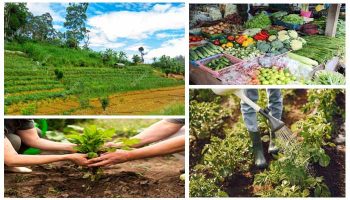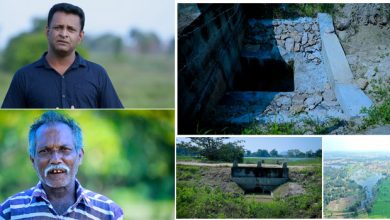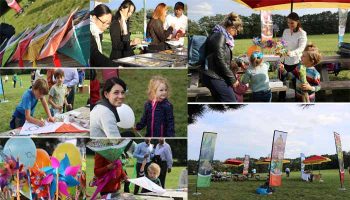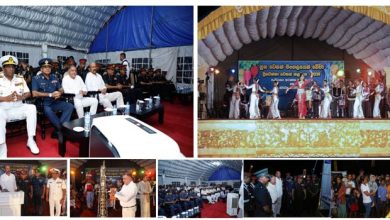Promotion of Senior Tourism for Resilience and Recovery of Post-COVID Sri Lanka Tourism

“Doing the Right Things and Doing Things Right”.
By

Prof. DAC Suranga Silva
(This article was written by author to Colombo Business Association
The outbreak of Coronavirus COVID-19 Pandemic has made a severe negative impact on global tourism development. The industry has become one of the most affected industries in the world at present

Pre-COVID 19 and Sri Lanka Tourism
Sri Lanka has been recognized as the Top Best Destination Country in the world for Travel in 2019 by Lonely Planet Travel Magazine.

Recovery of Sri Lanka Tourism from the Easter Sunday Terror Attacks on 21st of April has confidently come back at the end of Year 2019, bearing only 5-6 months. In 2019, total tourist arrivals was 1.9 million despite nearly 17% decline compared to 2018 (2.3 million of tourist arrivals).
Impact of COVID-19 on Sri Lanka Tourism: Reality Emergent
Tourism is a multifaceted and interconnected industry with the other sectors and industries of Sri Lankan economy. The industry has a strong backward and forward linkages, which is relatively higher than that in many other industries of our economy. It is also relatively a “People Centric Industry”. Current estimation of impact of COVID 19.
A Tip of the Iceberg: Considering all these aspects, the impact of COVID 19 on Sri Lanka Tourism must affect not only the income generation and employment of the tourism industry itself but also its direct, indirect and induced impacts for the other industries and as the whole economy of the country.

It has been approximately estimated that the majority of total of employees of Sri Lanka Tourism, direct and indirect, formal and informal are severely affected due to the impact of COVID 19. On average, it is more than 90% of total employment. As estimated, the total affected unemployment of the tourism industry due to COVID-19 is nearly 350,000 employees. All in all, Sri Lanka will have to lose its expected foreign exchange earnings, at least, nearly 3 – 4 US$ Billion. It was estimated that the country’s tourism earning in 2020 should have been more than 5 US$ Billion if the COVID-19 would not happen to the industry.
Resilience and Recovery of Post-COVID Sri Lanka Tourism: Insights for New Business Development
In a nutshell, on the face of COVID-19 Pandemic, it must be rational enough, as of no other viable option, if Sri Lankan as a determined nation can use this COVID pandemic as a “Bless in Disguise” to redesign the direction of Sri Lanka Tourism under the “New Normal” against the reality emergent.
The UNWTO predicts that international tourism could drop back to the level of 2012-2014 period due to the impact of COVID 19. On the other hand, noticeable changes in the trends and patterns of post-COVID tourism demand are anticipated. “New” tourists under “New” normal would center their travel and tourism demand on safety, health, hygiene, security, brands while seeking the highest value for their spending.
More specifically, Safety and Security have come fourth before Sun, Sea, Sand, Smile (Six ‘S’s). With a growing appetite for travel and tourism, post-COVID tourists would seek more convenience booking, affordable luxury, personalization in travel services with responsible and experiential tourism. They would be more likely to travel independently or in small groups, avoiding visiting crowded tourist destinations, preferring less well-known locations. Nature and culture based heterogenous travel options must be more interested for them while keeping their priorities for the destinations which have more established and developed infrastructure facilities and high-quality medical services.
Growing Global Senior Tourism: Opening Manifold Business Development Opportunities
The World population has been projected to increase from 7.7 bn at present to 9.7bn in 2050 by increasing 80 million per year on average. There were 703 million persons aged 65 years or over in the world in 2019. Globally, the share of the population aged 65 years or over increased from 6 % in 1990 to 9% in 2019. Furthermore, 12 % of the world population will be over 65 by 2030. 1 billion people in the world will be over 65 by 2030. The number of older persons is projected to double to 1.5 bn in 2050. The life expectancy to be reached by 2030 is 72 years old (https://www.wstc.website/senior-tourism/).
With this rapidly growing number of the elderly in the population in the world and an increase of leisure time and discretionary income of these elderly people, tourism and travelling among them is continuously growing (Nikki Wingate, 2017). Consequently, senior tourism industry provides unprecedented opportunities.
With the post-COVID new global travel and tourism demand patterns, the rapidly growing trend in elderly segment of tourists will continue to book holidays through formal and well-established travel agencies and online sources. These tourists constitute a large and growing travel market with significant potential yet to be tapped. According to World Senior Tourism Congress (WSTC), Senior tourism is growing exponentially in the world (https://www.wstc.website/senior-tourism/)
Although this type of tourism is growing fast, the tourism industry does not always meet its specific demands. For example, senior tourists often want to travel within the same age group, and they tend to value health tourism as well as tours requiring less physical intensity than regular tours.
This niche segment of tourism is named as Grey Tourism, Senior Tourism, Silver Tourism, Woopies (well-off older people), Gold Moon Tourism and so on. These senior tourists are as diverse as any other demographic group of tourist segments. They have been identified into several categories such as Vacationers, Livewires (energetic and unpredictable person), Explorers and Homebodies within senior tourism.
Senior Tourism has been displaying an increasing trend in global tourism for several socio-economic and demographic reasons. “Population ageing, coupled with socio-economic changes, has led to exponential growth in senior tourism” (https://www.wstc.website/senior-tourism/). Increasing of life expectancy or longer life expectancy and lower birth rates are two major demographic reasons for creating senior tourism at global level. Impact of such demographic reasons on senior tourism is significantly accelerated due to socio-economic and technological factors such as increasing empty nesters, growing discretionary income, improving health facilities and development of travel accessibilities. Changing lifestyles of elderly people with their increasing leisure time demand more entertainment in travel seeking novel experiences has become one of the most important driving forces in growing senior tourism in the world.

Major Characteristics of Senior Tourism and its Demand Patterns:
According to World Senior Tourism Congress (WSTC), although senior tourism is growing fast, the tourism industry has not made its due attention to meet the specific demand patterns and requirements of such tourists.

- Senior tourism will be one of the major prospective segments in hospitality and travel industry in coming recent decades.
- It has an exponential growth.
- Aged 65+ and usually retired with pensions
- Often traveling within the same age group
- Tend to value health tourism facilities while requiring less physical intensity than regular tours.
- Have more leisure times for travelling at any time of the year.
- Demanding for high quality services on soft recreation and relaxation facilities, health and safety
- Visiting local villages, markets and families
- Expect relaxed-pace itineraries and customizable
- Expect warm hospitality, caring and stress-free environment during vacations
- Wellness & Medical Tourism, Religious and Spiritual Tourism, Agritourism, Rural Tourism, Nature & Culture Tourism are interconnected and complementary types of tourism development in promoting Senior Tourism of a destination country
- Expect the developed infrastructure and accessibility facilities
- Need for specific training and human resource development (https://aiu3a.org/index-en.html)

Elderly Sri Lankan and Domestic Senior Tourism in Sri Lanka
According to the Asian Development Bank’s Report (Dec 2019) on “Growing Old Before Becoming Rich: Challenges of an Aging Population in Sri Lanka”, Sri Lanka’s demographic age structure will gradually switch from a pyramid structure, typical of most developing economies, to a pillar shape, similar to that of many developed economies. Furthermore, this shift in shape indicates the result of a rapid rise expected in the share of population over 65 years in Sri Lanka’s total population from 9.4% in 2015 to 21% by 2045 and to 35.6% by 2100. Furthermore, it is estimated that during the period covering 2010 to 2041, the Sri Lanka population would increase moderately by about 9 % from 20 to 22 million. During this period, the elderly population (60 and above) will increase from 2.5 million in 2010 to 5.3 million in 2041, an increase of over 100 %, or a doubling of the elderly population of Sri Lanka. If the aging population is growing with an increasing income then it would lead for exponential growth in Senior Tourism or “Silver Tourism” in Sri Lanka. Anyway, it is instrumental to implement suitable strategies to promote domestic senior tourism in Sri Lanka due to not only as a reliable source to recover and to make more resilince of Sri Lanka Tourism against the impact of COVID 19, but also ensuring happy and healthy life for aging population of the country.
Strategic Policy Measures for Promoting Senior Tourism in Sri Lanka
Following ten (10) key strategic policy measures and management strategies can be highlighted for promotion of Senior Tourism as a strategy for Post-COVID tourism development in Sri Lanka:
- Implement necessary policy measures and strategies focusing on the key requirements and priority areas for senior tourism development
- Develop human resources and technology essential to provide the best hospitality services, health and safety practices and memorable caring for senior tourists
- Use indigenous medical & related practices and products with local resources and local wisdom & knowledge
- Strengthening the private sector for innovative product development and investments under the necessary facilitation and guidance provided by entrepreneurial public sector services
- Promotion and integrate more specific tourism products such as wellness tourism, agritourism, food & culinary tourism, rural tourism, religious tourism and nature and culture tourism considering the demand trends and patterns in senior tourism
- Ensuring People-Centric and sustainable practices with the promotion of senior tourism
- Integrated tourism marketing with acute positioning and robust branding of Sri Lankan senior tourism
- Develop national strategic plan, guidelines and framework with the participation of stakeholders for well-designed future targets and achievements.
- Establish a proper disaster management and resilience building mechanism against the possible mand-made and natural disasters
- Promote different types of travel packages and family/couple/solo travels for senior tourism to make unique and memorable experiences
Selected References
- Megan Cleaver,Thomas E. Muller,Hein F.M. Ruys &Sherrie Wei (2014), ‘Tourism Product Development for the Senior Market, Based on Travel-Motive Research’, Journal Tourism Recreation Research, Volume 24, 1999 – Issue 1, pp 5-9, https://www.tandfonline.com/doi/abs/10.1080/02508281.1999.11014852
- Elisa Alén, Trinidad Domínguez and Nieves Losada (Jan 2012), ‘New opportunities for the tourism market: Senior tourism and accessible tourism’, www.researchgate.net/publication/259706127
- Athina Nella & Evangelos Christou (2016) ‘Extending tourism marketing: Implications for targeting the senior tourists’ segment’, Journal of Tourism, Heritage & Services Marketing, Vol. 2, No. 1, pp. 36-42, https://www.jthsm.gr/vol2iss1/2-1-5.pdf
- https://www.ceylonexpeditions.com/senior-citizen-holiday-sri-lanka-8-nights






